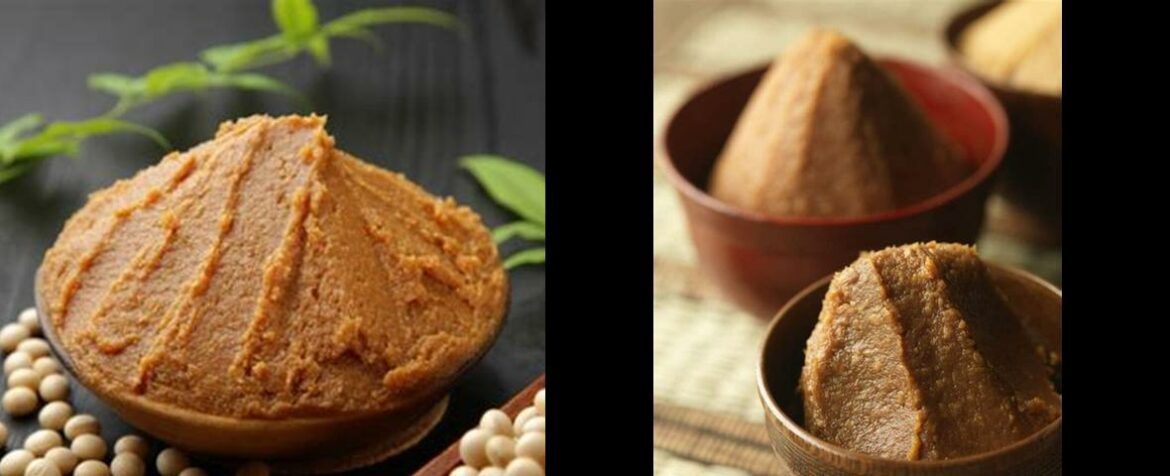Soybean Paste Substitute – Are you tired of searching high and low for that elusive soybean paste? Well, fret no more! In this blog post, we’re about to embark on a culinary adventure that will open up a world of soybean paste substitutes. Whether you’re a seasoned chef or a kitchen novice, get ready to enrich your cooking with these versatile alternatives. From miso to gochujang, we’ve got you covered. So, let’s dive in and discover a whole new realm of flavors that will take your dishes to the next level. Say goodbye to the soybean paste struggle and hello to a world of delicious possibilities!
Soybean Paste Substitute: Enriching Culinary Horizons
Introduction
In the culinary world, where flavors dance and textures intertwine, there exists a myriad of ingredients that hold the power to transform ordinary dishes into extraordinary experiences. Among these culinary gems, soybean paste stands tall, a fermented treasure that has captivated taste buds across cultures for centuries. While doenjang, a traditional Korean soybean paste, is widely revered for its deep, rich flavor and umami essence, its accessibility may sometimes pose a challenge. Fear not, intrepid culinary explorers, for there exists a symphony of substitutes that can harmoniously fulfill doenjang’s role in your culinary creations. Embark on a flavor-filled journey as we delve into the realm of soybean paste substitutes, unlocking a world of taste and versatility.
1. Sweet Bean Sauce: A Symphony of Sweetness and Savory
Hailing from the culinary traditions of China, sweet bean sauce paints a picture of sweet, savory, and tangy notes. This versatile condiment derives its essence from fermented soybeans, sugar, and various spices, culminating in a luscious, molasses-like texture. Sweet bean sauce seamlessly blends into marinades, glazes, and stir-fries, adding a touch of sweet complexity to your culinary endeavors.
Flavor Profile: Sweet, savory, and tangy
Texture: Luscious and molasses-like
Applications: Marinades, glazes, stir-fries, dipping sauces
2. Miso Paste: A Japanese Culinary Cornerstone
Miso paste, a Japanese culinary staple, embodies the essence of umami, a savory fifth taste that elevates dishes to new heights of flavor. Crafted from fermented soybeans, rice, and barley, miso paste boasts a diverse range of flavors, from mellow and mild to robust and earthy. Miso’s versatility shines in soups, marinades, glazes, and dressings, adding a depth of flavor that lingers on the palate.
Flavor Profile: Savory, salty, and slightly sweet
Texture: Smooth and spreadable
Applications: Soups, marinades, glazes, dressings, dips
3. Gochujang: A Korean Culinary Delight
Gochujang, a vibrant red Korean paste, brings a fiery kick and a burst of flavor to your culinary creations. Made from fermented soybeans, glutinous rice, and red chili peppers, gochujang possesses a spicy, sweet, and tangy profile that adds a distinctive Korean flair to dishes. Unleash its potential in stews, soups, marinades, and dipping sauces, and prepare for a taste sensation that ignites your senses.
Flavor Profile: Spicy, sweet, and tangy
Texture: Thick and slightly grainy
Applications: Stews, soups, marinades, dipping sauces, stir-fries
4. Doubanjiang: A Culinary Journey to Sichuan
Doubanjiang, a cornerstone of Sichuan cuisine, is a fermented soybean paste that exudes a complex interplay of flavors and aromas. Hailing from the Sichuan province of China, doubanjiang is crafted from fermented soybeans, broad beans, and chili peppers, resulting in a spicy, savory, and slightly sweet taste profile. Embark on a culinary adventure as you incorporate doubanjiang into stir-fries, marinades, and dipping sauces, allowing its bold flavors to transform your dishes into Sichuan delights.
Flavor Profile: Spicy, savory, and slightly sweet
Texture: Thick and chunky
Applications: Stir-fries, marinades, dipping sauces, noodle dishes
5. Fermented Black Beans: A Culinary Treasure from China
Fermented black beans, a culinary treasure from China, add a unique depth of flavor to various dishes. Crafted from fermented black soybeans, this ingredient boasts a rich, earthy, and slightly salty taste profile. Its versatility shines in stir-fries, soups, stews, and marinades, where it imparts a savory complexity that elevates the overall flavor experience.
Flavor Profile: Earthy, savory, and slightly salty
Texture: Soft and slightly chewy
Applications: Stir-fries, soups, stews, marinades, sauces
Conclusion: A World of Soybean Paste Substitutes Awaits
The realm of soybean paste substitutes is a vast and flavorful landscape, offering a symphony of tastes and textures that await your culinary exploration. From the sweet and savory embrace of sweet bean sauce to the fiery delight of gochujang, each substitute brings a unique dimension to your culinary creations. Embrace the versatility of these substitutes, experiment with different flavor combinations, and embark on a journey of culinary discovery. Whether you seek to replicate the umami richness of doenjang or simply explore new flavor horizons, these substitutes stand ready to elevate your culinary artistry.
FAQ about Soybean Paste Substitute
Q: What is soybean paste substitute?
A: Soybean paste substitute refers to alternative ingredients that can be used in place of traditional soybean paste in various culinary dishes.
Q: What are the applications of soybean paste substitute?
A: Soybean paste substitute can be used in stir-fries, soups, stews, marinades, and sauces to add flavor and depth to the dishes.
Q: What is the texture of soybean paste substitute?
A: Soybean paste substitute typically has a soft and slightly chewy texture, similar to traditional soybean paste.
Q: Can you provide examples of soybean paste substitutes?
A: Yes, some examples of soybean paste substitutes include sweet bean sauce and gochujang, each offering a unique taste and texture to enhance your culinary creations.
Q: How can I use soybean paste substitutes in my cooking?
A: You can experiment with different flavor combinations by incorporating soybean paste substitutes into your recipes. They can be used as a marinade, added to stir-fries, soups, stews, or used as a base for sauces.
Q: Are soybean paste substitutes as versatile as traditional soybean paste?
A: Yes, soybean paste substitutes are versatile and can fulfill the role of traditional soybean paste in your culinary creations, offering a world of taste and versatility to explore.


